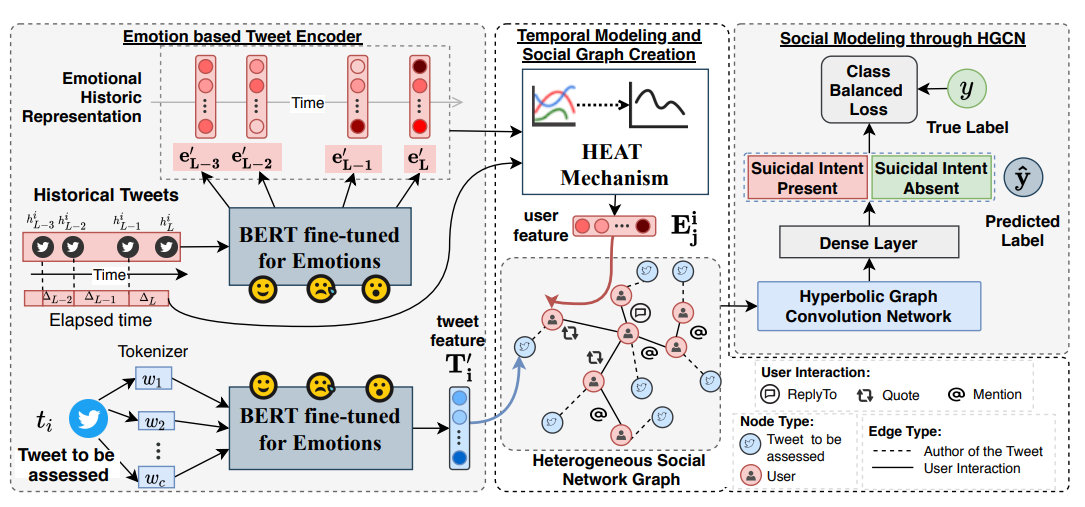NAACL 2021 Suicide Ideation Detection via Social and Temporal User Representations using Hyperbolic Learning
May 24, 2021
We are looking forward to present our paper “Suicide Ideation Detection via Social and Temporal User Representations using Hyperbolic Learning” from Ramit Sawhney, Harshit Joshi, Rajiv Ratn Shah and Lucie Flek at NAACL 2021.
In this paper, we present the first deep graph neural framework to identify suicide ideation on social media by explicitly modeling users’ social and temporal emotional context jointly.
To augment the textual and temporal context-based features, we leverage graph neural networks to learn representations of the constructed social graph. However, most GNNs such as Graph Convolution Networks operate in the Euclidean space, and often do not generalize well to the kind of hierarchical, tree-like networks users on social media, particularly those exhibiting suicidal behavior. Psychological studies show that such networks show scale-free characteristics, which follow the power law, i.e., the degree distribution of nodes decreases exponentially with a few nodes having a large number of connections. To capture such hierarchical and scale-free structural properties in the social network graph, we propose the use of a Hyperbolic Graph Convolution Network (HGCN).
We furher employ a mechanism leveraging Hawkes process, a selfexciting temporal point process, to learn the historic emotional spectrum of a user in a time-sensitive manner from their historical posts. This allows to factor in the natural irregularities in posting time of historical tweets.
Our system significantly outperforms state-of-the-art methods on this task, showing the benefits of both socially and personally contextualized representations. Given that, according to psychological studies, individuals exhibiting suicidal ideation increasingly turn to social media, we are hopeful that our preliminary prototype could in the future contribute to an assistive tool for prioritizing human expert, clinical psychologist-based assessment.
